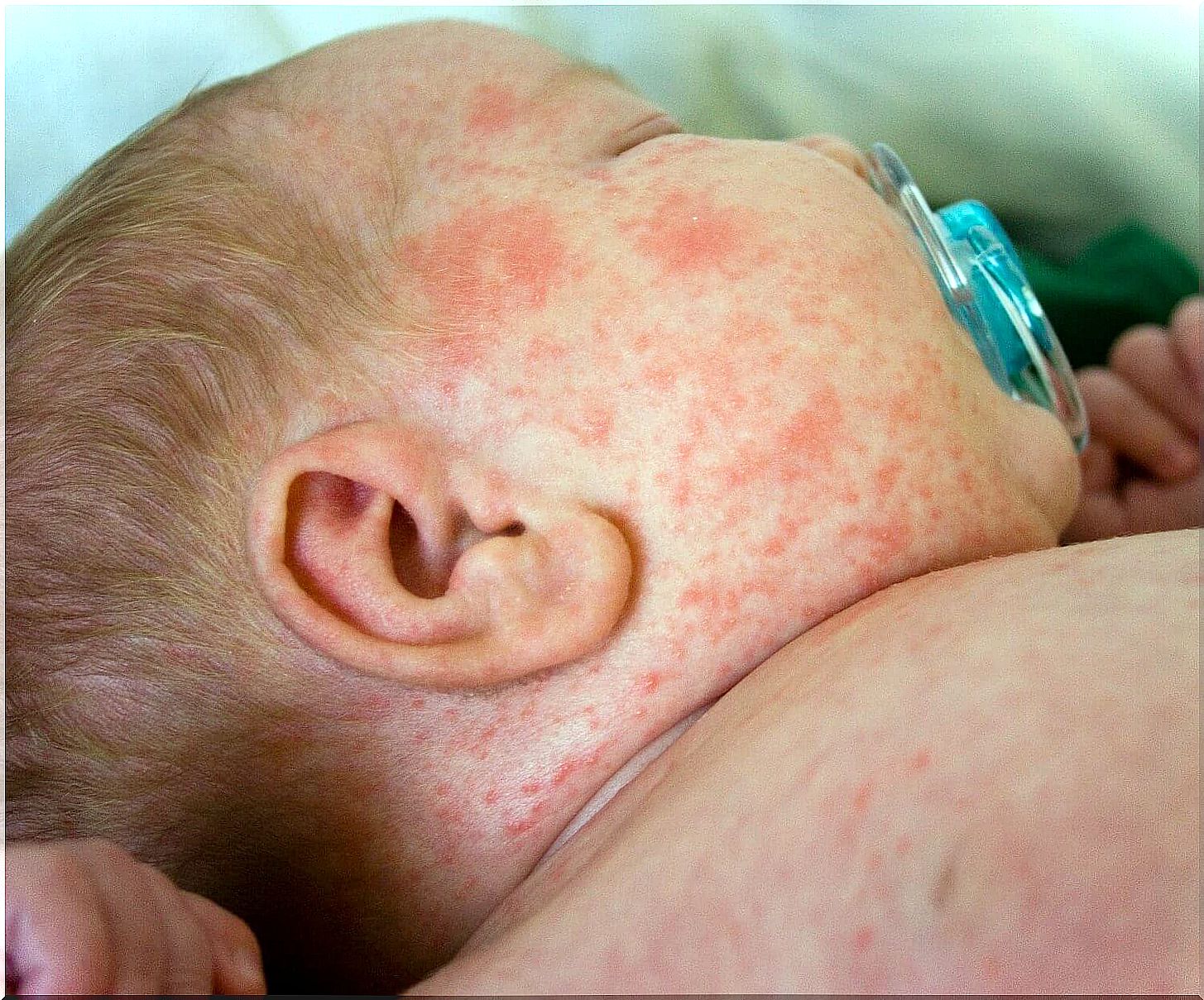Angiomas In Babies: Everything You Need To Know
Angiomas in babies (also called hemangiomas) are among the most common tumors that can be found. They appear within a few days of life and although they can grow quickly, they tend to disappear with age and, fortunately, they are benign.
These tumors usually appear as a small, deep red bump or spot on the skin. They affect blood vessels and can vary in size and shape.
Characteristics of angiomas in babies

Angiomas in infants are usually accompanied by the following symptoms:
- The most characteristic sign of the condition is the formation of a reddish lump during the first days of life.
- It can develop in any part of the body although they are more frequent in the infant’s facial region.
- During the first three to four months the lump may grow or change its size.
- From this moment on, their evolution slows down and from one year on, the hemangiomas present a softer tone and tend to flatten.
- Finally, the patient may show a small pink mark or scar after suffering from the angioma.
Effects of angiomas in babies
We can cite a set of effects that will fall on the patient as time passes:
- Disfigure or change the appearance of the patient in most clinical cases.
- Eye problems or discomfort due to a hemangioma over them. It also changes or hinders the person’s vision.
- If the hemangioma affects the liver, there are a number of other effects on the patient.
- They can also cause breathing problems if they are over an airway.
- Likewise, ulcers can form in the areas near the hemangioma, causing intense discomfort to the subject.
- Lip discomfort and problems sucking milk due to an angioma over the labial region.
Causes of angiomas in babies
The exact cause that triggers this problem is currently unknown, but it may be related to a lack of oxygen in the affected area.
This could occur both before and after delivery and would lead to abnormal blood vessel growth.
On the other hand, clinical studies in recent years have located a series of factors that increase the risk of suffering from it.
For example, it appears more frequently in girls, premature babies and babies with a weight below the recommended.
Diagnosis and treatment
As a general rule, the presence of this characteristic reddish alteration and its accelerated growth are sufficient for the corresponding doctor to carry out the diagnosis.

In the past, it was decided to apply radiotherapy, very high doses of corticosteroids or observe the evolution of the angioma. Also, these therapies could produce serious side effects in the individual both in the short and long term. For example, the presence of infections.
Currently the use of propranolol, is recommended a drug that is used to control hypertension. The use of this drug produces a considerable improvement in a limited period of time in the vast majority of clinical cases. It also speeds up the healing or scarring process of problem areas.
Among its most common side effects we can mention:
- Hypoglycemia (low blood sugar levels)
- Sleep disturbances (usually insomnia).
Is it possible to prevent them?
At the moment, no preventive measure has been established. Nor has it been shown that it has a genetic component or factor, that is, that it is hereditary. In the presence of nodules or lumps in your baby, do not hesitate to consult the doctor as soon as possible.
Early diagnosis is important to prevent the angioma from becoming large and compressing other structures.









